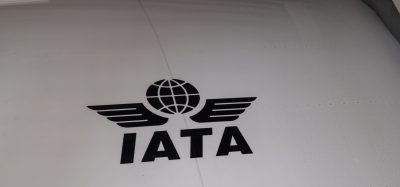The ‘Open Access Model’ fuel farm
- Like
- Digg
- Del
- Tumblr
- VKontakte
- Buffer
- Love This
- Odnoklassniki
- Meneame
- Blogger
- Amazon
- Yahoo Mail
- Gmail
- AOL
- Newsvine
- HackerNews
- Evernote
- MySpace
- Mail.ru
- Viadeo
- Line
- Comments
- Yummly
- SMS
- Viber
- Telegram
- Subscribe
- Skype
- Facebook Messenger
- Kakao
- LiveJournal
- Yammer
- Edgar
- Fintel
- Mix
- Instapaper
- Copy Link
Posted: 28 March 2008 | Rajgopal Swami, CFO, GMR Hyderabad International Airport Ltd (GHIAL) | No comments yet
Travel to any airport in the country and among the many things you will see are trucks re-fuelling aircraft while they are parked on the apron area. It is not just in India. This is commonplace in many other airports across the globe. The new Rajiv Gandhi International Airport at Shamshabad, Hyderabad, being developed by a consortium led by the GMR Group, is going to be the exception to this. In fact, it’s going to be the first airport in our country that has done away with the old system of deploying trucks to carry fuel to the aircraft.
Travel to any airport in the country and among the many things you will see are trucks re-fuelling aircraft while they are parked on the apron area. It is not just in India. This is commonplace in many other airports across the globe. The new Rajiv Gandhi International Airport at Shamshabad, Hyderabad, being developed by a consortium led by the GMR Group, is going to be the exception to this. In fact, it’s going to be the first airport in our country that has done away with the old system of deploying trucks to carry fuel to the aircraft.
The new system, created at the airport in Shamshabad, ensures that the supply of fuel to the aircraft goes through an underground pipeline. This system, named the ‘Open Access Model’, is based on the Hong Kong Airport fuel farm system.
After undertaking a rigorous screening for selecting the fuel farm operator, GHIAL has awarded the mandate to Reliance Industries Limited (RIL). About 10 companies, including the Indian fuel giants, Hindustan Petroleum, Bharat Petroleum and ONGC, took part in the tender process; among them, five submitted their bids. Subsequently, Reliance Industries emerged the winner based on its technical and financial bids.
The ‘Open Access Model’ means that any oil company can supply fuel to airlines as per their agreements. This model is the first of its kind in India and has been successfully deployed in other major international airports such as Hong Kong. It has been developed in consultation with internationally reputed companies: Red Mallee, an Australian-based consultant, and Hong Kong Airport Services, Hong Kong.
The aviation fuel service system consists of a tank farm, a refueller calibration area, a hydrant system and an aviation fuel receiving facility. The aviation fuel tank farm on the airport has a capacity of about 13,500kl of Jet A1 fuel (ATF). After quality testing, aviation fuel is transported by smaller barges to the farm, from where it is pumped to the tank farm at the airport. The facility will also honour GHIAL’s commitment to the environment. Reliance Industries Ltd also operates and maintains the fuel farm.
The storage tanks will be connected to the apron through underground pipelines, forming the hydrant system, and will cater to the fuel needs of all airlines present. Anyone who is authorised by the Government of India and has a valid contract with the airline companies, will be allowed to supply fuel through these pipelines.
RIL has 42 hydrant dispensers, amounting to a total investment of over $20 million USD. The delivery of the aviation fuel, from the hydrant pits at the parking bays to the aircraft, requires the services of the into-plane agents. There are two into-plane agents at RGIA, WFS and Swiss Fort. Both companies have been awarded the contract for the provision of refueling and defueling services.
The advantages of this new system are that it avoids duplication of infrastructure and equipment. This is due to the presence of a common carrier of fuel and the low cost of infrastructure, due to economies of scale. As the system is an Open Access model, it increases competition, reduces costs and entry barrier for new players.
The aviation fuel facility management association monitors and reviews the performance of the operator and provides advice to the authority. The operation and management of the aviation fuel system is transparent to all stakeholders.
We have adopted this Hong Kong Fuel Farm model since it has many advantages over the conventional fuel supply system. One more reason for adopting this system is that it has been very well appreciated by the international air community.
From day one of winning the mandate to develop the new international airport in Shamshabad, Hyderabad, it has been the endeavor of the developer, GHIAL, to adopt all the globally successful models and bring the world-class experience to air-travellers who use this airport.
About the author
Rajgopal Swami was born in 1960 and graduated from St. Xavier’s College, Kolkata, a Bachelor of Commerce in 1982. Mr Swami has over 24 years experience and prior to joining GHIAL he had worked for such companies as; Electric Lamp Manufacturers (India) Limited (a subsidiary of Philips), ITC Classic Financial Services Limited, Mitsui Babcock Energy (India) Limited and Stone India Limited. He is a Chartered Account, Company Secretary and also a Certified Public Accountant. In his spare time he enjoys reading, travelling, trekking and spending time with family and friends.

















